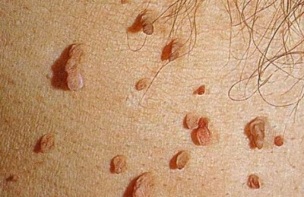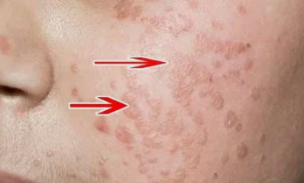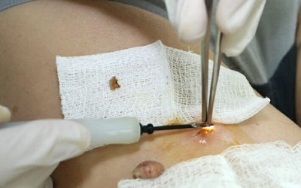
Human papillomavirus (HPV, HPV - human papillomavirus) or papillomavirus is a group of more than 100 types of viruses, 80 of which are pathogenic infections for humans. According to the World Health Organization, 70% of the world's population is infected with the HPV virus. In most cases, the infection occurs after the onset of sexual activity and can be asymptomatic for a long time.
Causes of HPV infection
Symptoms of HPV infection in women may include: various types of warts, flat and genital warts, and cervical dysplasia. However, the most dangerous manifestation of the pathology is the development of cervical cancer. There is also evidence of infection of the anus, external genitalia, and vagina with certain types of human papillomavirus (HPV types 16, 18, 45, 56).
Ways of distribution:
- Sex.The main way human papillomavirus is transmitted. The use of a condom during sexual intercourse significantly reduces the risk of human transmission of human papillomavirus, but because the size of the virus particles is so small, it cannot guarantee that there will be no infection.
- Communication-home path.Causes of infection - the use of shared intimate hygiene products: towels, soap, public toilets, baths.
- natural childbirth.HPV can be transmitted to infected children through the birth canal of an infected woman.
The source of this infection is the cells of the patient's skin and mucous membranes. In this case, the person may not be aware that he or she is infected with the virus, because the warts and papillomas are microscopic in size and remain invisible during visual inspection.
Factors contributing to the development of viral infections:
- The onset of sexual activity at an early age;
- having sex without a condom;
- frequent abortions;
- presence of infectious diseases of the genital organs;
- long-term use of oral contraceptives;
- Decreased immune response;
- non-compliance with the rules of personal hygiene;
- if your sexual partner has HPV;
- Frequent stressful situations;
- bad habits.
Through the pores, cracks, and microtraumas of the skin and mucous membranes, the virus enters the basal layer of the epithelium, ensuring the normal growth and renewal of the skin and mucous membranes. The DNA of the basal layer cells (deoxyribonucleic acid) carries information about the healthy structure of the cells. The virus attaches to the DNA and alters this information, resulting in damaged cells that grow and divide, causing symptoms of the disease.
Signs of human papillomavirus infection in women

One of the possible manifestations of human papillomavirus infection is genital warts and papillomas. They are certain formations that resemble cauliflower, grape system or rooster comb, pinkish or flesh-colored. Depending on the type and type of virus, they can infect human skin and mucous membranes.
Genital warts can appear around or near the anus, especially if you have anal sex.
Papillomas can occur on the skin of the fingers, toes, hands, around the eyes, armpits and scalp. They also sometimes appear on the soles of the feet and cause a characteristic pain when walking.
This type of disease is rare and can lead to malignant tumors and cancers, but the formations are surgically removed to prevent the disease from progressing.
Consequences of HPV infection
Human papillomavirus can cause enlargement of the genitals, papillomas, and warts in women, which can cause discomfort, pain, and bleeding to varying degrees when they are injured.
Eighteenth and sixteenth types of HPVs are the most dangerous because they can cause cancer. Cervical cancer is the second most common cancer among women, with a strong link between human papillomavirus infection. Then the death rate reaches fifty percent.
Flat warts

This disease is characterized by the appearance of flat plaques that hardly rise above the level of the skin.
Most often, the mucous membranes of the vagina and cervix are affected.
The cosmetic flaws they have are much smaller than the genital warts.
This type of pathology has a high risk of developing cancer.
Dysplasia of the cervical mucosa
Pathology is a change in the normal structure of cells in the lining of the cervix, called atypia. In gynecology, this condition is considered a precancerous lesion and requires monitoring and intensive treatment.
In most cases, the disease is asymptomatic and is diagnosed by a gynecologist. There are several degrees of dysplasia: mild, moderate, severe. The choice of treatment depends on the severity.
Cervical cancer
This is the most dangerous form of the disease. Cervical cancer is the second most common cancer in women and is associated with infection with HPV types 16 and 18.
The disease may be asymptomatic or manifested by non-specific symptoms: weakness, increased fatigue, weight loss, vaginal bleeding in addition to the menstrual cycle.
Methods of treatment
If you have symptoms of HPV infection, do not treat it yourself, given the risk of its consequences.
To choose the optimal treatment tactics, you should consult a gynecologist, who will conduct a thorough examination, perform the necessary tests and prescribe adequate therapy.
To date, no drug has been developed to permanently cure HPV. The main goal of treatment is to reduce the concentration of the virus in the body and prevent further progression of the disease.
The main directions of therapy:
- treatment of manifestations (warts, papillomas, dysplasia);
- antiviral therapy; Use of immune-boosting agents
- .
In the presence of papillomas, genital warts, warts, dysplasia, it is recommended to remove them, even if small, because the presence of neoplasms increases the concentration of viral particles in a woman's body, which contributes to the further development of the pathology.
Surgical treatment
Ways to get rid of genital warts, papillomas, warts and dysplasia are as follows:
- surgical;
- cryotherapy;
- diathermocoagulation;
- laser coagulation;
- radio wave therapy;
- chemical attack.

The surgical method is to remove the plants with a scalpel, which is the cheapest method of treatment, but then there is an obvious cosmetic defect and the healing time is significantly extended. There is also a risk of a second infection. Therefore, this type of intervention is used in exceptional cases.
During cryotherapy, liquid nitrogen is applied to the affected area, which freezes the pathological formation. After a few days, the papilloma or condyloma disappears, a small ulcer appears under it and heals in 10-14 days.
Diathermocoagulation is the application of high temperatures to the affected areas of the skin. This procedure is very painful and requires anesthesia. The disadvantage of this method is the appearance of rough scars instead of pathological structures.
During laser coagulation, the effect of the laser beam on the affected area dries out the neoplasms. They are replaced by a dry crust, which disappears after a while without leaving a scar. This type of treatment is the mildest, but its cost is considered a disadvantage.
Radio wave therapy involves exposing the affected area to radio waves. With this type of treatment, there is no risk of bleeding, no visible scars, but the disadvantage is the high cost.
The chemical method is used when there is a small formation. Special medicine is applied to the affected area. After repeated use, a crust forms on the cleaned area, which disappears after a few days.
Drug use
Treatment for human papillomavirus infection involves the use of the following groups of drugs:
- antiviral drugs;
- immunostimulants.
A long course of antiviral therapy is prescribed to reduce the concentration of the virus in a woman's body and prevent it from multiplying. The drug is used in the form of tablets and suppositories, the course and dose of treatment should be determined only by the attending physician.
Immunostimulants are prescribed after testing to determine the level of decreased immunity in order to increase the body's defenses, accelerate the formation of immune cells and stimulate the production of antibodies to fight the virus.
Treatment of HPV infection in pregnant women
The presence of human papillomavirus infection in a woman's body does not affect the reproductive system and is not contraindicated in pregnancy. If HPV is exacerbated during pregnancy, no therapy is given during this period and treatment is prescribed after delivery.
However, a woman should be monitored by a doctor throughout her pregnancy. Mild methods of therapy are prescribed for severe discomfort with development. In exceptional cases, caesarean section is performed when there are contraindications to vaginal birth as a result of HPV progression.
Getting rid of HPV with folk remedies
To get rid of warts, papillomas and warts at home, you can use folk remedies decoctions and tinctures of herbs - papillomatosis, ointments.
How to make decoctions and infusions to treat human papillomavirus infection:
- Horse tails, nettles, rose hips, dandelion roots, and leaves are mixed in equal amounts. 3 tbsp. l. Add 800 ml of water to the mixture, boil on low heat for 10 minutes, then infuse for 3 hours. Apply 1 glass 3 times a day 30 minutes before meals.
- Oregano herbs, yarrow, immortelle, St. John's wort, birch buds, nettle, calendula, coltsfoot, bull root, chamomile flowers, thread, leaves of seedlings, celandine, linden flowers, cumin seeds, sage. Pour 2 tablespoons into a thermos. l. The resulting mixture should pour 500 ml boiling water and infuse overnight. Drink 0. 5 glasses 4 times a day.
- Valerian root, lemon balm, oregano, linden flowers, hop cones, native herbs are mixed in equal amounts. Pour 1 tablespoon into a thermos. l. The resulting mixture pour 0. 5 liters of boiling water and infuse for 3–5 hours. Apply 250 ml 2 times a day.
The following are used to treat local conditions:
- Celandine juice. The juice is made from fresh leaves or bought at a drugstore. Before using the product, the skin of the affected area should be steamed and healthy areas near the affected area should be treated with oil cream. Celandine should be carefully applied to the affected skin. The procedure should be repeated every two weeks until the pathological formation disappears.
- Garlic. Grate the vegetables and mix with the skin cream until a viscous consistency is formed. Apply the mixture on the affected areas for 2-3 hours every day for a month. After the procedure, wash the skin with soap and water.
- Young walnut. They should be crushed with a meat grinder, pour the resulting mixture into a glass container of 0. 5 liters, fill 2/3 and pour kerosene into the remaining container. Leave to infuse for 20 days, then swim through a towel. Infusion to treat damaged skin 2 times a day.
After therapy and getting rid of the appearance of HPV, a woman goes to the gynecologist every six months to prevent further progression of the disease.














































































